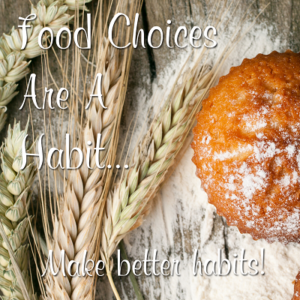 Since there is no medical cure for Celiac Disease, the only viable option is to drastically alter your diet in order to achieve relief from the symptoms. Any food items that contain gliadin, which is a class of proteins present in wheat and other grains within the grass genus Triticum, need to be completely removed from the diet.
Since there is no medical cure for Celiac Disease, the only viable option is to drastically alter your diet in order to achieve relief from the symptoms. Any food items that contain gliadin, which is a class of proteins present in wheat and other grains within the grass genus Triticum, need to be completely removed from the diet.
This is the only way that the small intestine can be allowed to heal after it has been continuously aggravated by these proteins over a period of time.
Deciding to go gluten-free can be a huge task to take on, due to the vast enormity of foods that contain it. Wheat is not the only culprit; it is additionally present in rye, barley and sometimes even oats due to cross-contamination.
Other kinds of grains such as corn and rice are considered to be safe to eat. A large problem is that gluten is an additive to many condiments and sauces, making it difficult to avoid in many pre-packaged foods and when eating out in restaurants.
Thanks to all of the press celiac disease has undergone over recent years, there is now a significant number of gluten-free products available in most health food stores and grocery stores. Gluten-free cookies, pastas, crackers and cereals have become widely accessible.
You can try brown rice pasta, corn pasta and vegetable pasta. Eating protein rich foods such as cheese and nuts, along with fresh fruits and vegetables throughout the day will help you stay satisfied and healthy.
Reading Labels
It is imperative that you check the actual ingredient listing on the packaging. If you are not sure whether or not a food contains gluten, check with the manufacturer first and don’t purchase it until you have found out. Most labels contain website contact information or toll free phone numbers for these kinds of customer inquiries.
Many different products that you eat may contain gluten. These items can even include vitamins and medications that utilize gluten as a binding agent, malt flavoring and food additives which are often loosely labelled as “modified food starches.”
Gluten-Free Product Location in Your Favorite Grocery Stores
How many times have you been grocery shopping only to find that some stores place similar items in different aisles? Many stores separate their “natural foods” and “gluten-free” items.
Before you go to your local health food store to find appropriate breads, pastas, cereals, cookies and pastas, ask the store manager at your favorite grocery store. They will tell you whether they are located somewhere special in the store or if they carry them at all.
Make Special Requests for Your Favorite Gluten-Free Products
Many stores are happy to place special orders for their customers. By simply providing the manager with the names of your favorite new gluten-free brands, they may be able to bring them in for you. After all, you will not be the only customer seeking these products.
Grocery stores are very competitive and if they can save you an extra trip by making their store a “one-stop-shop” everyone will come out a winner.
A Healthy Lifestyle Change
It is common to feel deprived by the strict restrictions of the diet at first, however, there are so many new gluten-free products at the grocery stores now that you will soon discover new favorites.
By practicing patience and exercising creativity, you will find substitutes for your prior favorite foods that contain gluten, as many others have done successfully. The internet and the library are excellent places to discover new recipes as well.






